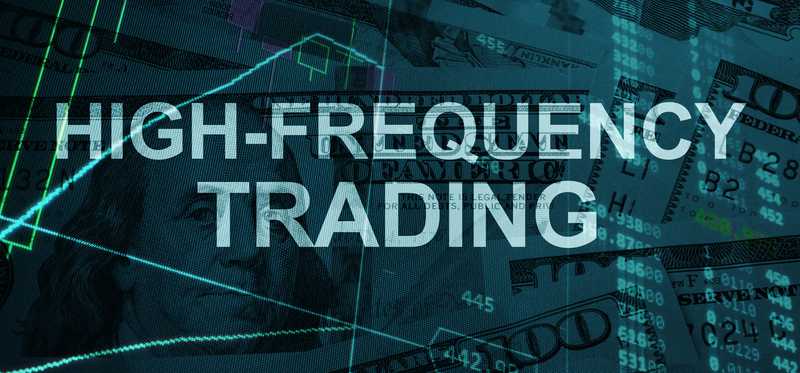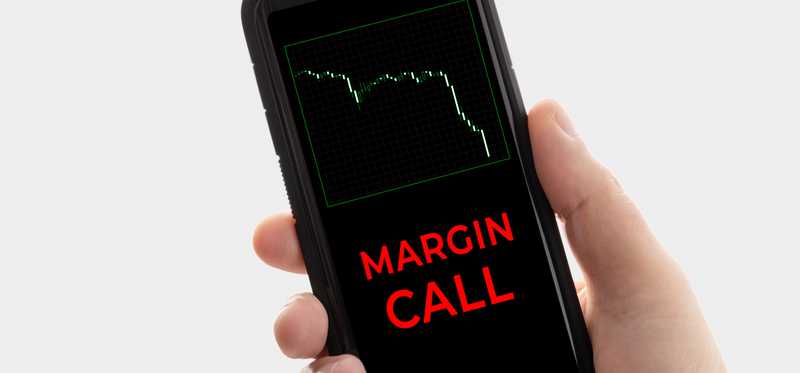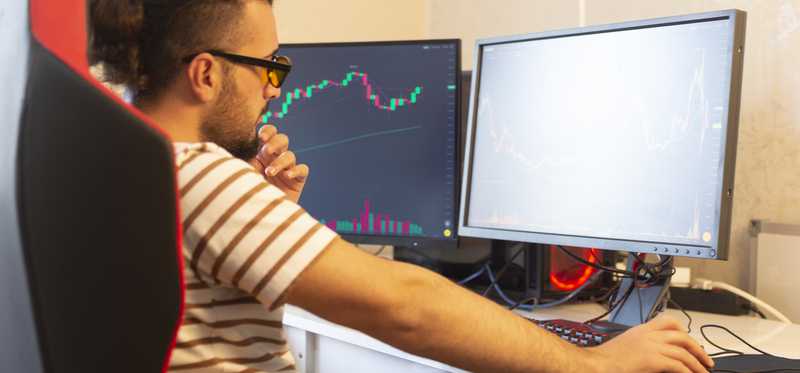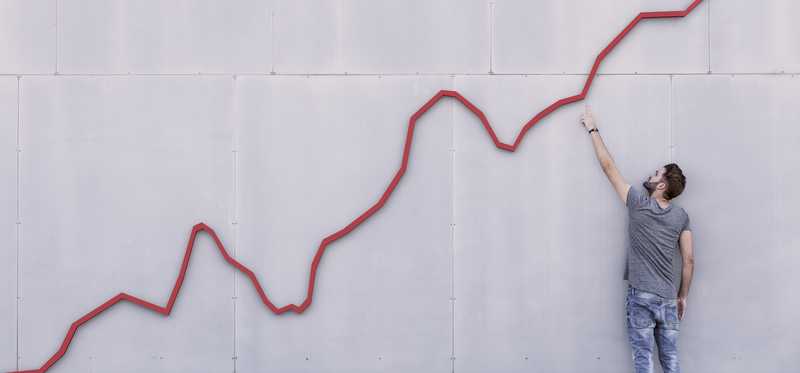10 Reasons Day Trading Isn't Worth It

10 Reasons Day Trading Isn't Worth It
Not as easy as it looks
Buy low and sell high. That's the core sequence of events required to make money in the stock market. Traditional investors can wait years between the buy and the sale. But day traders, well, they try to get the job done in a single day.
The appeal of day trading isn't hard to grasp. Well-timed trades can easily produce double-digit gains faster than it would take you to commute to the office. And thanks to apps like Robinhood and TradeStation, you can buy and sell with no transaction costs -- making the road to profitability even shorter.
Unfortunately, the lure of quick gains can easily distract you from one simple truth: that day trading just isn't worth it. Here are 10 reasons why.
5 Winning Stocks Under $49
We hear it over and over from investors, “I wish I had bought Amazon or Netflix when they were first recommended by the Motley Fool. I’d be sitting on a gold mine!” And it’s true. And while Amazon and Netflix have had a good run, we think these 5 other stocks are screaming buys. And you can buy them now for less than $49 a share! Simply click here to learn how to get your copy of “5 Growth Stocks Under $49” for FREE for a limited time only.
Previous
Next

1. High emotional costs
Day trading is emotionally taxing. On a good day, you are elated. On a bad day, you are frustrated or scared. In between, you might bounce between hope and fear, depending on how much sleep (or coffee) you've had in the last 24 hours.
That emotional roller coaster can damage your relationships and your overall well-being. It can also cost you financially if you let those emotions push you into trading decisions. And it only takes one stress-fueled trade to send you spiraling into regret and self-recrimination.
The takeaway? Day trading can consume your emotional resources just as quickly as it can burn through your money.
Previous
Next

2. High taxes
The profits you make as a day trader are taxable. The rules governing that taxation depend on whether the IRS considers you an investor or a trader. The distinction between the two isn't clear-cut -- but you essentially have to be trading full-time to earn "tax trader status" and the tax perks that go with it.
If you plan on day trading alongside your regular job or at low volume, you probably have to report your profits as short-term capital gains. And short-term capital gains are taxed as ordinary income. In 2021, federal tax rates range from 10% to 37%, depending on your income level. If you are a single filer and make $50,000 annually, for example, Uncle Sam may take 22% of your day-trading gains.
Previous
Next

3. Excessive time commitment
Day trading isn't an easy way to make a buck. Before you dive into day trading, you have to master trading terminology and define your own trading system. You then have to test out and refine your approach using a day-trading simulator.
Once you're ready to start making trades, you have to be present and focused at least a few hours daily when the markets are open. And outside of that, you'll spend additional time researching and locating stocks that fit your strategy.
All in, you could invest anywhere from 20 to 50 hours a week in trading and related activities. If you are independently wealthy and love the work, that's one thing. But if you're trading to make a buck, the time might be better spent at a job that delivers a more reliable paycheck.
Previous
Next

4. Losses hurt more than gains help
In day trading, your losses always hurt you more than gains help you. Say you invest $1,000 and lose 10% of it. Now you have $900. If you earn 10% on the $900 the next day, you're only back up to $990 -- which is $10 in the hole. This dynamic holds in the opposite direction, too. If you make 10% on your $1,000 first, that brings you up to $1,100. If you then lose 10% on the $1,100, you're down to $990.
The short story here is you can't make up for a 10% loss today by earning a 10% gain tomorrow. You have to do better than that just to break even.
ALSO READ: Stop Trying to "Get Rich Quick" and Upgrade Your Investing Strategy Instead
Previous
Next

5. You can't beat HFT
High-frequency trading, or HFT, is algorithm-powered trading. Basically, computer programs analyze massive amounts of market data and transact a high volume of trades very quickly. Critics say that HFT takes profits from individual investors who can't execute as quickly as a computer algorithm.
The other side of the HFT argument is that the practice adds liquidity to the market -- which day traders rely on to make money. If you want to sell 100 shares of stock fast at $50 a share, you need a buyer and you don't care if the first one to the table is a computer.
Still, HFT can present problems for you as a day trader, particularly as you are refining your trading approach. You can't compete with HFT on speed, so you may end up looking for opportunities in lower-volume stocks. That raises your risk substantially.
5 Winning Stocks Under $49
We hear it over and over from investors, “I wish I had bought Amazon or Netflix when they were first recommended by the Motley Fool. I’d be sitting on a gold mine!” And it’s true. And while Amazon and Netflix have had a good run, we think these 5 other stocks are screaming buys. And you can buy them now for less than $49 a share! Simply click here to learn how to get your copy of “5 Growth Stocks Under $49” for FREE for a limited time only.
Previous
Next

6. Financial risk is high
Multiple studies confirm that most day traders lose money. Specifically, a report on Brazilian day traders found that just over 1% of them earned more than the Brazilian minimum wage. Another study of Taiwanese day traders concluded that the "vast majority" of them were not profitable and, despite their losses, kept trading anyway.
It's natural to think your experience will be different, that you know how to cap your losses. Unfortunately, losing a little bit every day still adds up to a lot of money over time. And that's without considering the opportunity costs of day trading. Your money and your time are valuable, and there are other, safer ways to use those resources to build wealth.
Previous
Next

7. Buying on margin increases risk
Buying on margin is a common practice for day traders, since investing with borrowed cash amplifies your profits. Say you put up $500 and borrow $500 to make a $1,000 stock purchase. Sell that position for $1,100 and you've made $100 or 25% of the $500 cash you invested, not counting any interest on the borrowed funds. If you'd paid all cash, you would have made 10%.
The trouble is, buying on margin also amplifies your losses. In a cash transaction, you only risk the cash you put up. When you buy on margin, you're on the hook for the cash plus whatever amount you borrow. And, if the equity value in your account falls below the required maintenance margin, your broker will ask you to deposit more cash. If you don't comply, the broker can sell any of your positions to bring your account back into compliance.
ALSO READ: 3 Things Keeping You From Getting Rich in the Stock Market
Previous
Next

8. Extra margin requirements
Before trading on margin, most investors must deposit at least $2,000 of cash or securities in their margin account. Pattern day traders, however, are subject to the much higher minimum of $25,000.
The Financial Industry Regulatory Authority (FINRA) defines a pattern day trader as a margin buyer who completes more than three day trades within five business days. The number of day trades must account for more than 6% of that investor's trading activity during those five days.
If your day-trading business plan involves buying on margin, expect that your broker will ask you to comply with the $25,000 minimum. Some brokers may set even higher thresholds.
Previous
Next

9. No substitute for the real thing
You can test out your trading strategy using a simulator, but that's no substitute for actual trading. A risk-free simulation does not replicate the emotional ups and downs of trading with actual money. Your trading plan may be solid, but fear or greed can prompt you to deviate from that plan and make decisions you later regret.
Unfortunately, the only way to know if you can keep your cool is to start trading. And if it turns out you're not as calm and intentional as you'd like, you'd have to address that on the job -- hopefully without losing too much along the way.
Previous
Next

10. Day-trading scams
Swindlers are drawn to high-risk, high-reward activities like day trading. Sadly, once you start researching what it takes to be successful as a day trader, you become a target. You'll see ads about courses, memberships, stock tips, and other paid services that promise to help you reach your goals. Some of these may have value, but many are scams. It can be very difficult to distinguish the two.
That puts you at a disadvantage when you want to increase your knowledge, since you may not know which sources to trust. Worse, if you get caught up in a scheme, the results could be even more damaging financially than mistimed trades.
5 Winning Stocks Under $49
We hear it over and over from investors, “I wish I had bought Amazon or Netflix when they were first recommended by the Motley Fool. I’d be sitting on a gold mine!” And it’s true. And while Amazon and Netflix have had a good run, we think these 5 other stocks are screaming buys. And you can buy them now for less than $49 a share! Simply click here to learn how to get your copy of “5 Growth Stocks Under $49” for FREE for a limited time only.
Previous
Next

Not worth the effort
Day trading is risky, but it's also resource intensive. Statistics show that you are very likely to fail -- but to find out for sure, you have to consume your time, money, and, possibly, your emotional well-being. That's not a reasonable trade-off, particularly when other, more patient styles of investing can produce far more reliable results.
The Motley Fool has a disclosure policy.
Previous
Next
Invest Smarter with The Motley Fool
Join Over Half a Million Premium Members Receiving…
- New Stock Picks Each Month
- Detailed Analysis of Companies
- Model Portfolios
- Live Streaming During Market Hours
- And Much More
READ MORE
HOW THE MOTLEY FOOL CAN HELP YOU
-
Premium Investing Guidance
Market beating stocks from our award-winning service
-
The Daily Upside Newsletter
Investment news and high-quality insights delivered straight to your inbox
-
Get Started Investing
You can do it. Successful investing in just a few steps
-
Win at Retirement
Secrets and strategies for the post-work life you want.
-
Find a Broker
Find the right brokerage account for you.
-
Listen to our Podcasts
Hear our experts take on stocks, the market, and how to invest.
Premium Investing Services
Invest better with The Motley Fool. Get stock recommendations, portfolio guidance, and more from The Motley Fool's premium services.